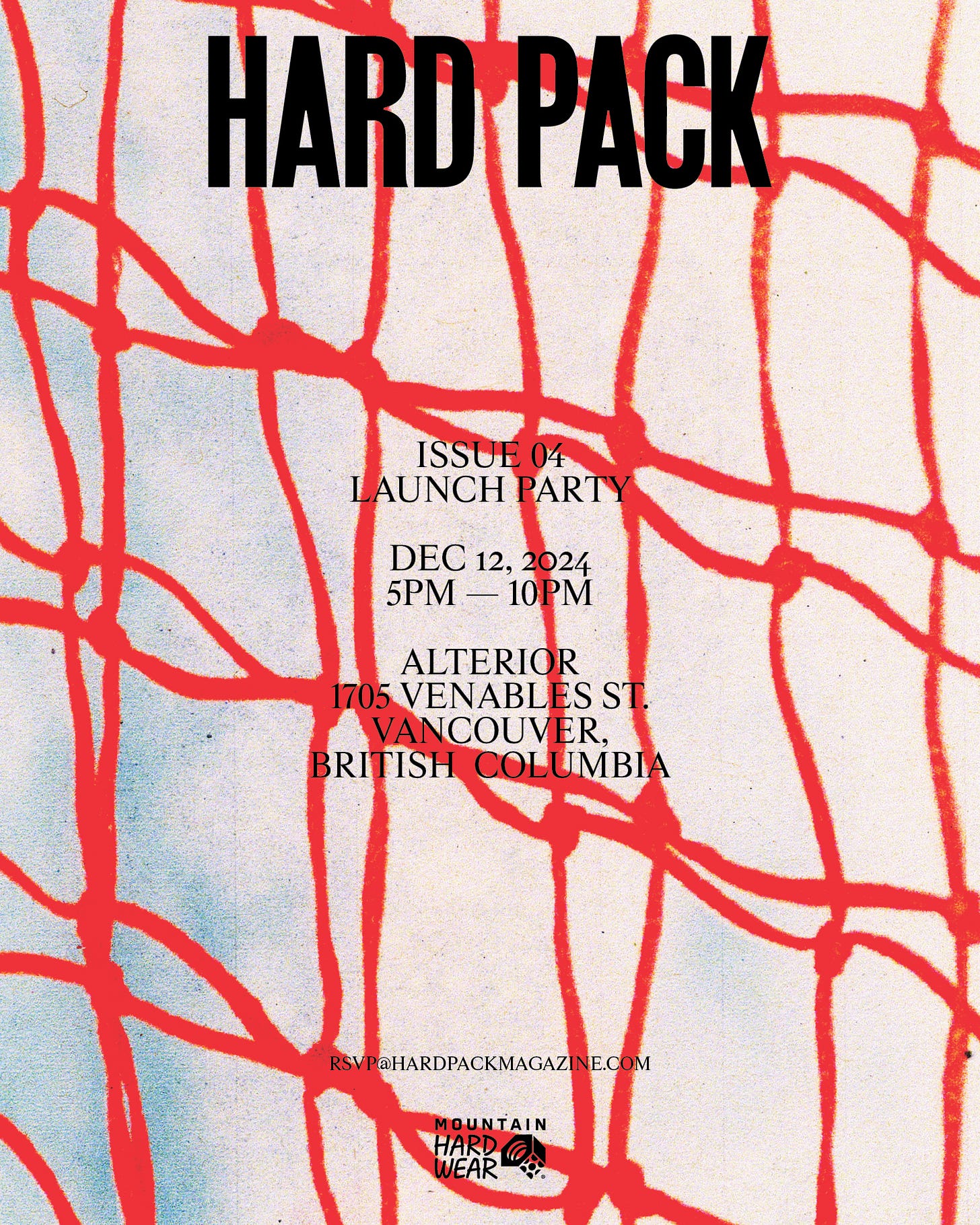A New Type of Ski Magazine: The Hard Pack Story
Hard Pack Editor-in-Chief and Founder Zach Seely on creating the type of ski magazine he wanted to read himself.
Hard Pack is a new type of ski magazine that combines edgy reportage with cerebral writing to create a new lexicon for the sport that is weird, philosophical, and dangerously fun. Excited to share Zach’s story!
An interview with Hard Pack Editor-in-Chief and Founder Zach Seely.
How would you describe Hard Pack to someone who’s never heard of it? And what’s the story behind how it all began?
Hard Pack is best described as a new kind of ski magazine. Traditional ski content often falls into two camps: the bougie Bavarian lodge, après-ski culture or the mountain-town ski bum vibe with a jam band aesthetic. While skiing is broader than these stereotypes, neither captures my experience of the sport. Hard Pack aims to go beyond these clichés, using skiing as a lens to explore intersections with design, architecture, philosophy, literature, poetry, art, and fashion. We see skiing as a gateway to connect with these diverse worlds and bring those connections to light.
The idea came from a personal place—I wanted to read this kind of magazine, but it didn’t exist. Inspired by high-design sports publications like Victory Journal, surf magazines, and Raquet, I wondered: where’s the equivalent for skiing? Not finding it, I decided to create it. Hard Pack wasn’t born from a business opportunity but from the desire to fill a gap I felt personally passionate about.
What’s your personal connection to skiing? How did you get started, and what does the sport mean to you?
I grew up in Sandy, Utah, and first hit the slopes at Alta when I was just three years old. Skiing was a family tradition—my dad was an avid skier, and my grandfather, a former instructor at Brighton, passed down his passion. From my childhood home at the mouth of Little Cottonwood Canyon, I could see the tram and Mount Baldy from my window, with the resorts just a short drive away. My uncle also worked at Snowbird for years, so skiing was ingrained in my life early on. While it was "forced" on me, I quickly embraced it, and when you start so young, it naturally becomes a part of who you are.
What does skiing mean to me? I’m still figuring that out. A great day on the slopes is my perfect day, but this magazine is part of my journey to unpack my relationship with the sport—my love for it, and the complexities that come with it. Skiing is an exclusionary activity in many ways; it requires access, means, and proximity to the mountains. These barriers feel more pronounced now than they did when I was a kid, and that’s something I think about a lot. Beyond the gratitude and joy skiing brings me, this magazine is an exploration of its deeper meaning in my life.
You’re about to release Issue 04. Can you share a preview into the concept or theme of this new issue?
It’s probably obvious—I’m an outsider to the ski industry. My background is in the creative industries in New York, not skiing. I’ve never worked for a ski brand, on a mountain, or had connections to professional skiers when I started. That outsider perspective has shaped our editorial voice from the beginning.
Issue 04 marks our first deeper dive into the industry, featuring a guest editor: Cole Richardson, an incredible Canadian big mountain freeride skier. Over the past year, he gave us access to amazing athletes and stories, but we’ve maintained our outsider lens. For example, we have a standout feature on Jib League, a new ski competition league positioned as an alternative to the Olympics and X Games. The piece—a 6,000-word profile—was written by a fantastic journalist from Interview Magazine.
We also prioritize photographers who’ve never shot or published work about skiing, bringing fresh perspectives to the sport. With Issue 04, we’re straddling the line: one foot inside the industry, one foot firmly outside. And it’s a big one—232 pages, six covers—we’re all in on this edition.
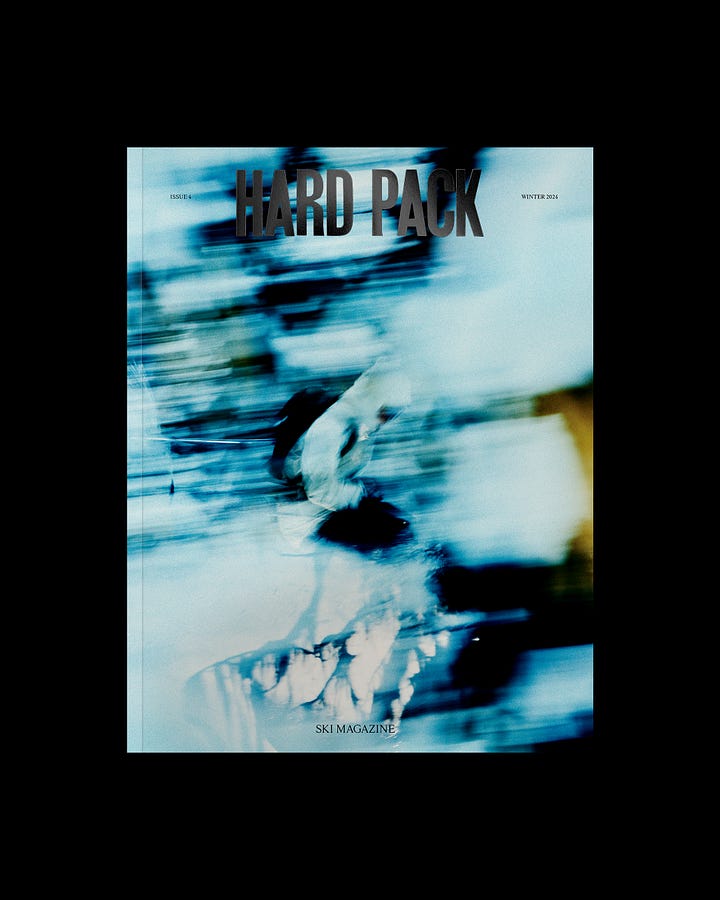
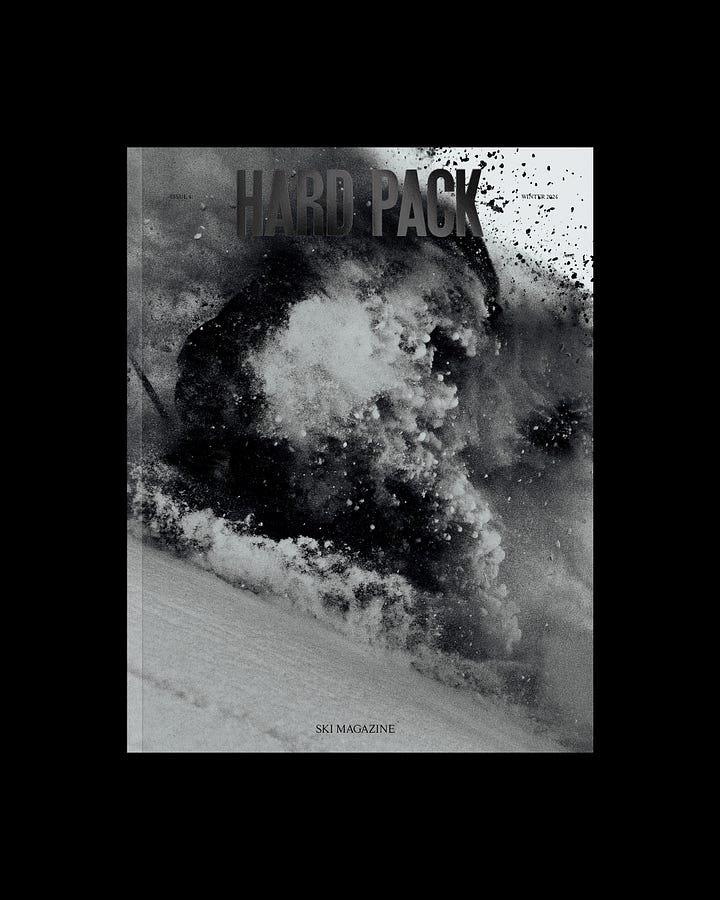
What makes a story idea, writer, or photographer feel like a perfect fit for Hard Pack?
The most important realization I had when starting this magazine was the need to create a new lexicon for skiing—a fresh way to talk about and celebrate the sport. My love for skiing is expansive, and I wanted new language and imagery to reflect that. To achieve this, I sought out writers and image creators who haven’t traditionally worked in skiing. Some have never skied; others are experienced skiers but have never written about or photographed it creatively. I look for strong voices and unique creative angles, which often results in an exciting alchemy that redefines how we see and discuss the sport.
It’s not just about finding interesting subjects; it’s about pairing the right storyteller with the story to make it truly special. We also focus on the fringes of the ski world, telling stories you won’t find elsewhere. We might not profile the top ski racers, but we’re fascinated by the amateurs, the artists, and the musicians who ski. That’s what gives Hard Pack its distinct perspective.
Can you share a piece or a moment from the magazine’s journey that you feel best captures its ethos?
One story from Issue 02 stands out because of the impact it had on us. It was by Samuel Bradley, an incredible photographer and director who primarily works in fashion and music. Initially, we wanted to collaborate on a nature-focused story, but production and budget constraints derailed the plan.
Instead, Samuel shared a photo of Matthew Henson, a Black American explorer and the first person to reach the North Pole.
Inspired by Henson’s iconic image wearing a fur-lined hoodie, Samuel reimagined an exploration story—not in the Arctic, but in London. The result was a fashion-forward editorial featuring an adventurer lost in London, complete with skis, dogs, and sleds. The story, That Went Downhill Fast, resonated with readers, many of whom told me they’d never seen anything like it in the ski world.
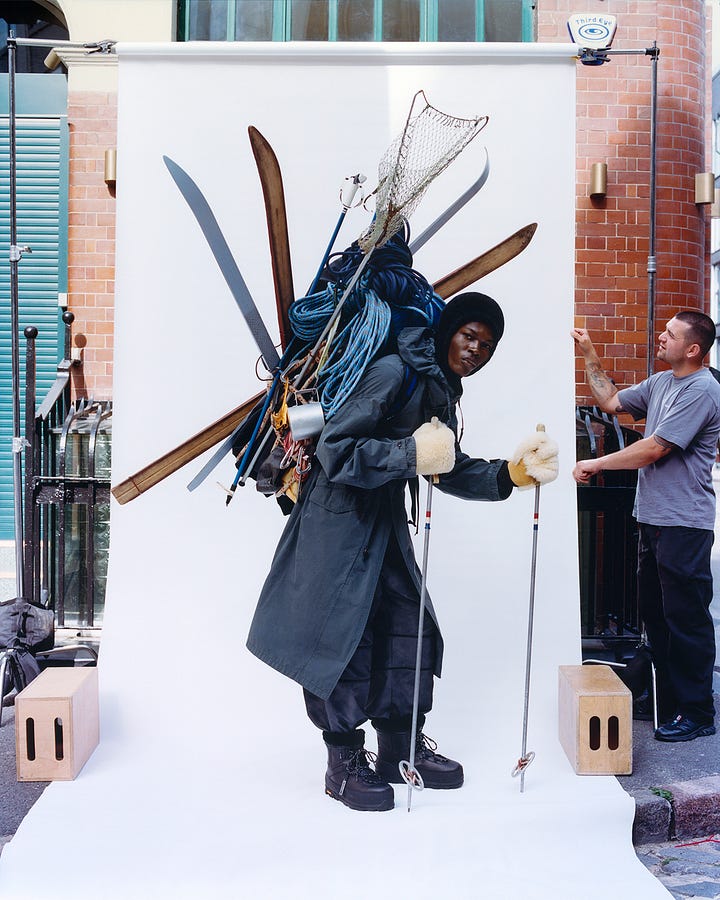
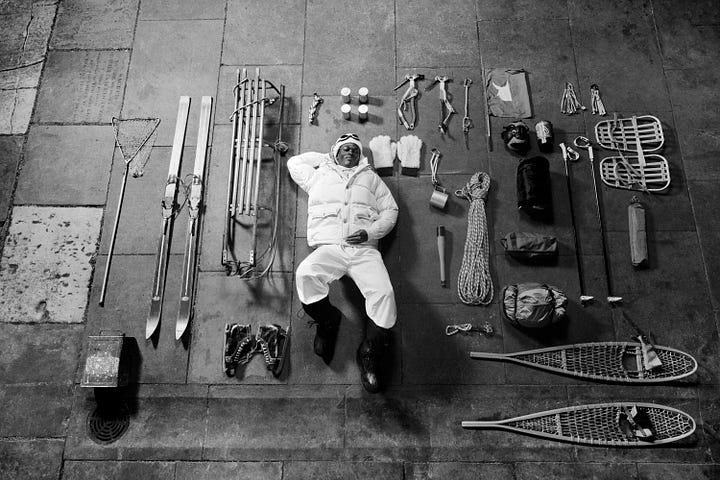
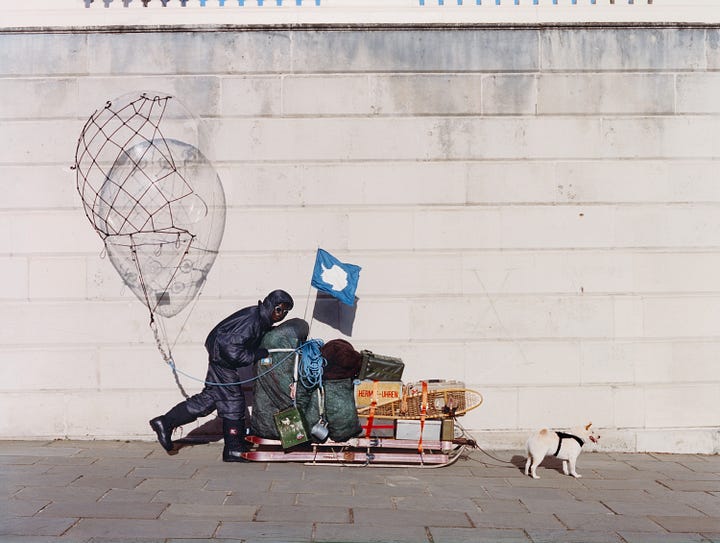
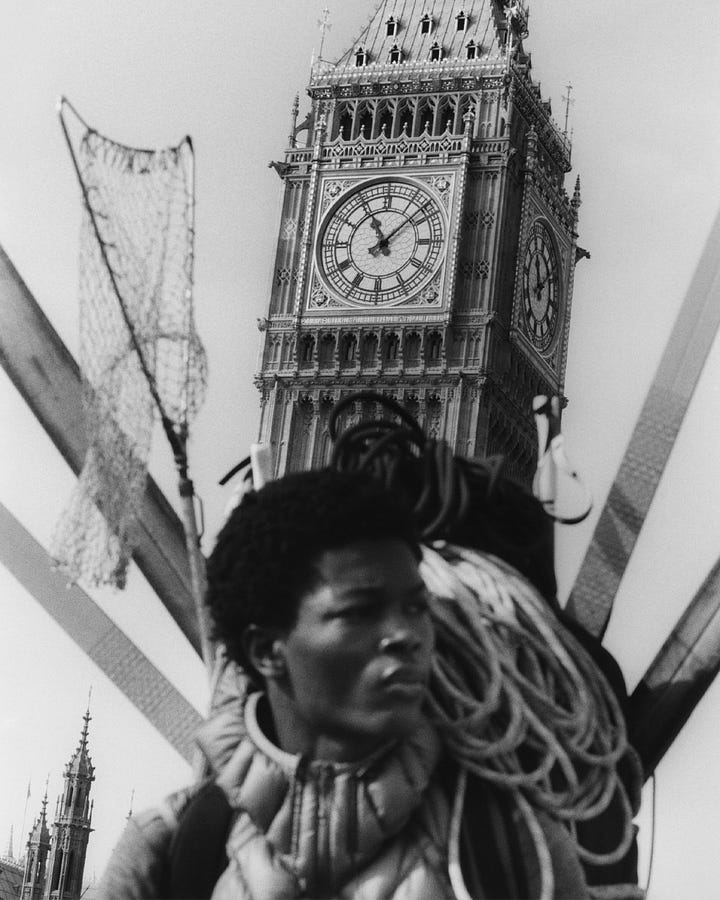
On the writing side, a standout from Issue 01 is The Slopes of Mount Analog by poet Mike Soto. Despite never having skied, Mike crafted a piece of fiction about skiing that struck a deep chord with readers. Athletes have told me it perfectly captures their experience, and they’re shocked to learn he’s never been on the slopes.


These stories encapsulate what makes Hard Pack special—bringing in fresh perspectives, cracking open the ski world, and inviting new voices to reimagine what skiing can mean.
You clearly care deeply about design and visual storytelling – what’s your approach to using those elements to tell a story?
As the editor, I want to give full credit for the magazine’s design philosophy to our incredible creative team: Brendan Dunne and Ken Tokunaga. They’re old friends from my time working in the fashion and design industries, and I was thrilled to collaborate with them because I’ve always admired their aesthetic.
Magazines are in a strange place—while many are dying, independent publications are experiencing a revival. For Hard Pack, our guiding principle is to remain creatively uncompromised. We reject traditional magazine structures like front-of-book, feature wells, and back-of-book sections. Instead, each issue dictates its own design, letting the content guide us.
For example, we don’t pre-engineer our covers. Instead, we wait for the images to arrive and choose the ones that resonate most, often resulting in multiple covers per issue. We take the same approach with the interior design—each story informs how it should be presented. From experimenting with fonts to using multiple paper stocks and advanced printing techniques, we treat the magazine as a physical object worth investing in.
If Hard Pack could collaborate with any artist, athlete, or writer (living or dead), who would it be?
I have two answers to this.
First, we’d love to work with photographer Jack Davison. We’re huge fans of his work and believe he could bring a fresh, incredible perspective to skiing. Hopefully, something will come of that collaboration.
Second, for someone no longer with us, a key inspiration for the magazine has been James Laughlin. James was an impresario, publisher, poet, and skier who embodied the intersection of literature and skiing. In 1936, he founded New Directions, a publishing house that became a cornerstone of Western avant-garde literature, publishing legends like Vladimir Nabokov, T.S. Eliot, Ezra Pound, Tennessee Williams, and William Carlos Williams.
At the same time, James was instrumental in developing Alta, the ski resort in Utah. He built the first lodge, edited manuscripts there, and even sent Nabokov to Alta to write novels. He wrote his own poetry, covered ski races worldwide, and contributed to ski journals. James seamlessly wove together his passions for literature and skiing, and having him as a collaborator today would be incredible.
Where do you see Hard Pack heading in the future? Are there any plans to expand beyond print?
This fall, we got our first taste of expanding beyond the magazine with a gallery exhibition featuring Cole Richardson, funded by Arc'teryx. The project documented Cole’s season by commissioning three different artists to create work, all of which was displayed in New York. This wasn’t just our idea—it was a collaboration with Cole.

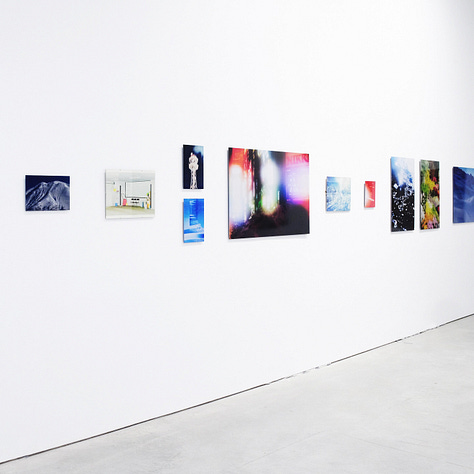

In the ski industry, athletes often produce films that premiere each fall and go on tour. While I think those are cool, I’m not particularly interested in making a ski film. Instead, we wanted to subvert that concept—deconstructing the idea of a ski film and reimagining it as a gallery installation. I see us doing more of this in the future, taking an art gallery approach to skiing.
Beyond that, I’m also exploring book publishing—coffee table books, republished works, and new commissions. Another vision is curating a film festival, but not focused on traditional ski films. Instead, it would feature cinema that references skiing in creative, unexpected ways.
While we’ll keep branching out, the magazine will remain our core. We’re committed to a biannual print-only format—no website, no digital pivot. I want to grow our readership and prove there’s still a hunger for beautiful, physical publications in this space.
What’s your ultimate hope for Hard Pack? How do you want it to shape ski culture or the way people think about the sport?
I don’t think Hard Pack will change the ski industry in a sweeping, permanent way, but I do hope it becomes a vanguard for the sport—a “before and after” moment in how people think about it. Coming from an outsider’s perspective, I’ve noticed the ski industry can feel insular and a bit stuck in its ways, often speaking only to itself. My hope is that Hard Pack cracks it open, introducing new voices, fresh perspectives, and different ways of talking about, photographing, and writing about skiing.
At the start of this conversation, I mentioned the two dominant images of skiing: the Bavarian lodge aesthetic and the Grateful Dead-inspired ski bum culture. While both have their place, they don’t tell the full story. What are we missing when we privilege these two archetypes? Skiing is much broader and more interesting than those limited views suggest.
The sport has deep connections to culture, art, and history, and I want Hard Pack to highlight that richness. My hope is that we inspire others to see skiing differently—or even to carve out their own vision for the sport, creating a new, more inclusive image of what it can be.
I like to ask every Slopeside interview subject, what is your favorite mountain and why?
For nostalgia’s sake, Snowbird is probably the place I’ve skied most in my life. I have vivid memories of skiing my first double black run there when I was about 10 with my dad. His name is Scott, so naturally, his favorite run was Great Scott, which I also love.
Snowbird was a constant presence growing up. These days, it’s much more crowded, and the canyon traffic is overwhelming, so I don’t go as often. I spend more time in Park City now since my parents moved closer that way.
What has always stuck with me, though, is Snowbird’s architecture. As a kid, I was captivated by its bold, modern design—it felt so unique. Even now, it still strikes me as one of the coolest aspects of the resort.
Zach and the Hard Pack team are hosting Issue 04 launch parties in Paris, NYC, and Vancouver in December. Stop by if you’re around!
Purchase Issue 04 of Hard Pack here. (Doubles as a fantastic holiday gifting idea for the skiers in your life.)








